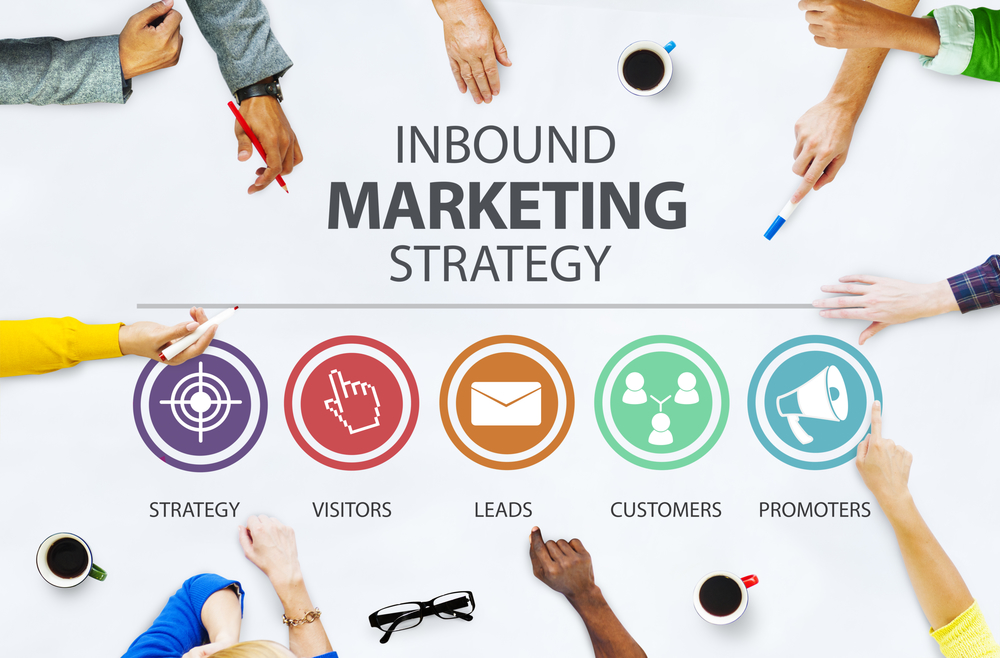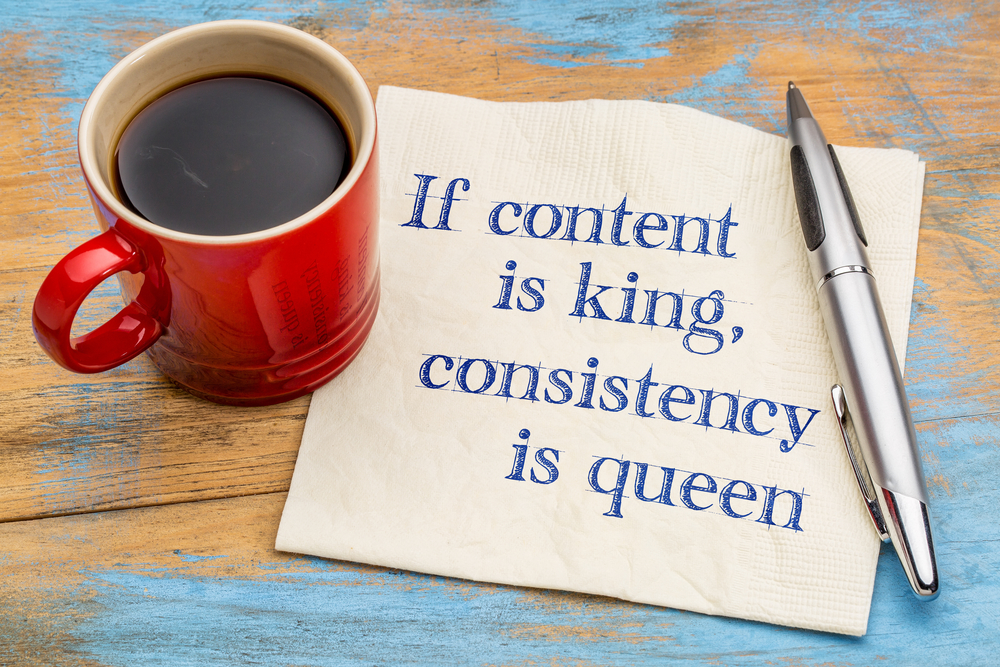As people spend more and more time in front of screens, digital marketing has become the most important tool to promote your digital business and reach customers in an effective way. Digital marketing targets users of all kinds of electronic devices from desktop computers to smartphones.
To successfully promote a digital business online and engage an audience, you need to make use of various types of digital marketing. This article will help you discover how to promote your digital business and how quality content can help you achieve that. Let’s get started.
- How to Promote Your Business
- Quality Content
- How do You Write Content to Promote Your Business?
- How to Promote Your Business With Digital Marketing
- 10 Ways to Market Your Business Online
How to Promote Your Business
From Facebook adverts and newsletters to traditional print and PR, there are so many ways on how to promote your business. But how do you know which is best?
Some PR specialists explain the seven most popular ways to market and advertise a small business, both online and offline.
1. Media relations
Also known as PR, media relations is simply getting articles about you and your business in publications and their online websites.
Read Also: Boost Your Business Growth With Business Cards
Perhaps you’ve won a new contract, launched a new product or service, appointed new people or achieved record results. It might be that something quirky has happened within your business or you’ve reached a milestone, such as an anniversary, or you’ve sold a significant number of items.
Another way to get coverage is by giving advice or having strong views about a subject and being prepared to openly state them.
2. Social media
Social media plays a critical role in marketing your business if used effectively. With over 45 million active users reported in the UK and 1.3 million users joining in 2020 alone, the opportunity to reach and engage with such a huge audience is not to be missed.
Social media is a great way to connect with people who already engage with your brand and introduce the business to people who are yet to discover you. Recent research revealed that 58 percent of consumers visit a brand’s social pages before visiting their website – that’s an 81 percent increase from last year.
What are your business goals?
Before you begin developing a social media marketing campaign, you need to consider your business goals. Do you want to reach a wider audience, generate more traffic to your website or increase product sales?
It is also important to understand who your target audience is, what platforms they are likely to use and what kind of content they will find useful and engaging.
What should I post on social media?
Creating relevant content for your audience is crucial to the success of your social media, whether it’s on Facebook, Twitter or Instagram. When creating content, think about what your audience wants to see and what valuable content you can give them in return for their attention.
If you are in a service-based industry, free resources and tips from your business can go a long way – you’ll become their go-to when searching for information, leading to potential new clients. If you are a product or brand, invest in photography and video and create a consistent brand identity with your assets. It’s also worth knowing that video is one of the most engaging assets, so use it whenever possible.
Social media is not just about putting the right content out there. As a business, you need to generate a two-way conversation with your audience so they feel a human connection, making you more memorable and more likely to keep followers.
It’s important to regularly review your channels to understand what’s working. Each social platform offers basic analytics. It’s good practice to dig deep into your analytics on a weekly and monthly basis to analyze, review and tailor your strategy to maximize results.
3. Digital advertising
Targeting specific audiences, executing data-led strategies and delivering measurable results are only a few of the benefits of marketing your business via digital advertising. The main digital advertising channels are PPC (Pay-Per-Click), display and paid social. All of them run across mobile and desktop devices.
Digital advertising can be a minefield, but it’s completely transparent and accountable – you will be able to see, down to the penny, where your budget has gone and which aspects of your campaign have been the most effective.
What is Pay-Per-Click?
Search (PPC) campaigns are often run on Google Ads, which is Google’s own online advertising network. They can help you advertise to your target audience whilst optimizing any ad spend to give the best return on investment. PPC campaigns can be tailored so your ads are only shown to people who have made a search that is relevant to your product or service.
What is display advertising?
If your objective is more about brand awareness and not leads, then you should consider display advertising instead.
Believe it or not, the Google Display Network (GDN) claims to reach 90 percent of all Internet users worldwide. It’s a vast network of web pages, news sites, blogs, video platforms like YouTube, and email providers such as Gmail.
Users browsing sites within the GDN may not be interested in your product or service just yet, but you will get the chance to ‘pitch’ it to them. You can even remarket to users who have already visited your site in the past but didn’t convert to remind them of the solutions your business can offer them.
What is paid social advertising?
Whilst social media profiles are free to set up, consider investing in paid content, too, particularly on Facebook and Instagram. In basic terms, this means you assign a set budget to a post which boosts its reach, allowing it to be seen by more people.
Facebook, the world largest social network, is an excellent alternative to Google if you want to advertise your business in a highly targeted way. You can do this by setting up ad campaigns targeting users by age, gender, location, job title, interests and even behaviors. They’ll see text, image and videos displayed in Facebook stories, in-stream videos, Facebook search and messages, articles and the Facebook app.
If you decide to appoint an agency to look after your digital advertising:
- make sure you understand what they are saying to you, keep asking until you do
- be prepared to pay a fee for their strategic advice and implementation in addition to the advertising spend itself.
4. Press advertising
To be effective in magazines and newspapers, your advertisement needs to be both big and bold.
If your advertisement doesn’t stop someone in their tracks and make them take notice, then you will have wasted your money on buying the space.
What should be in my advert?
The headline, text and images you use are crucial. Rather than focusing on what you want to say, think about your target customers – what do they want or need to hear from you? Get inside their heads, think about a message that will resonate with them.
Focus on the benefits of your product or service rather than the features. If your business manufactures underfloor heating, plumbers will want to know that it’s easy to install and will deliver them a good profit but if you’re targeting homeowners directly, they’ll want to know how it makes them feel when they step on it in the middle of a bitterly cold night.
Sometimes it can be challenging to think in this way, so you might want to consider using a creative agency to help you formulate ideas. The added benefit is that you’ll then be able to adapt their ideas into all sorts of other marketing materials – e-shots, mailers, posters – so paying someone to come up with ideas is definitely worth the cost.
5. Direct mail
Back in the pre-digital era, direct mail earned the nickname ‘junk mail’. Not a morning went by without there being a pile of letters and leaflets on the doormat. It had become a victim of its own success – sadly, all the well-targeted and relevant messages were lost among the irrelevant ones.
Direct mail can be wonderfully effective, provided you follow three key rules:
- Use good quality data. If you manage your own database, make sure it’s clean and up-to-date. Alternatively, consider buying data from a reputable data broker – it’s far more affordable than you might think.
- Send content that is relevant to the recipient. It’s pointless promoting a children’s nursery to a database of over 70’s.
- Make sure your mailer piques interest by standing out and featuring intriguing messages that resonate with the recipient.
Although direct mailers are more expensive than e-shots, they can be far more impactful and effective. Emails can be easily deleted and go unread, whereas it’s far harder to ignore a physical mailer which also has a longer shelf life, especially if the creative content is strong.
6. Search engine optimization
SEO has established itself as one the key practices to market your business online. It has become essential for most companies to have a well-optimized website and this is where SEO is crucial.
In order for your webpages to show up for relevant search terms or ‘keywords’ in search engines like Google, they need to be optimized across three different areas: technical, on-page and off-page.
Technical SEO ensures that Google understands and can easily and quickly access all pages you want to rank. Having a technically sound website is only one aspect of great SEO.
Ultimately, users want to read about your product or services, so you need high quality, engaging content that’s optimized in order for Google to rank it.
Tips for writing online content
- Write for the user, not the search engine. If your content isn’t readable, you will struggle to convert users into customers.
- Within your copy and HTML code, you will need to pay attention to optimising page titles, headings, internal linking and image descriptions for every page you wish to rank.
Now you’ve got qualitative content live, you need a ‘vote of confidence’ from topically relevant, external sites. Attracting links naturally as well as manually through local link building, guest blogging, influencers, content marketing and PR campaigns.
7. Email marketing
The key to generating great sales is being able to communicate clearly and in a timely manner to your target audience. Email marketing is great for creating short-term urgency and adding incremental revenue as part of your regular marketing activity.
You can use emails tactically to drive a limited time offer, end of season sale or to promote a new service.
Email marketing is:
- Cost-effective
- Measurable
- Immediate
- Scalable
- Efficient
Tailor your message
Once you have your customer list to hand, you can tailor your messaging to the right audiences – engagement rates will probably be high for customers who have previously used your services or purchased from you.
Those customers can also share the email with their friends or contacts, expanding the reach and awareness of your brand to an audience you might never have engaged with before. Staying in touch with existing customers is a great way to keep your brand front of mind and present loyal, lapsed and potential customers with the most up to date offers and new products or services.
Track your results
The results of email marketing are immediate and you can quickly see the number of customers who have received your email, opened it and clicked on any of the links or offers within it. This will give you a quick indication of how well the email is performing in terms of overall engagement, sales and return on investment (ROI).
The data will give you actionable insights, too, so you can see which are the most popular types of content, products, services or offers for any specific audience. You can then tailor your follow-up emails to reflect these learnings.
Integrated as part of a wider campaign or used as a standalone activity, email marketing is one of the best ‘ returns on investment’ channels there is.
Quality Content
You don’t have to be big business with lots of resources to create quality content that can help promote your business. Most small to mid-sized businesses benefits from using a content marketing strategy to grow their businesses.
If you are trying to figure out the kind of content you should be creating to promote your business, we have provided some tips to help in this area. These tips are simple and easy to use.
1. Solve Problems – What problems do your customers complain about? What concerns do they have? Answering questions is a great way to build content, especially because other customers likely others have the same issues.
2. Create Case Studies – Did you solve a customer’s problem? Did a customer tell you about his amazing results with your product or service? All of that information would make a great case study that you can easily write up in a format that explains the problem, solution, results, and perhaps includes a quote from the client as a testimonial. Case studies are one of the most trusted content types, so create them whenever possible.
A case study about one of your customer’s experiences with your product makes for a compelling copy.
3. Do Research – Do you collect data on any topics related to your business? Do you ever hold focus groups? Do you have a blog or social media presence with followers you can ask to complete a survey? Put the responses into statistics. Even better, if they’re surprising and go against what the reader expects.
Integrating numbers like statistics into your narrative copy will help attract interest and social shares of your content.
Writing up original research positions your business as an industry leader and authority. It also is unique content that no one else will have and others might even choose to quote you or link to your research, which can help your SEO.
4. Tell a Story – Ever listen to a great speaker, someone who captivated their audience? Most likely, they told a few stories. Anecdotes are extremely compelling. If you can come up with a story that’s relevant to your product or service, you can create content that’s sure to engage readers. According to SEO company, The Hoth, “Stories are a powerful tool for making content more engaging, even in boring niches.”
Stories, not unlike novels, make for engaging content. Tell an anecdote related to your product or service.
5. Be Entertaining – Everyone wants to be amused or entertained. That’s what makes a video, photo or idea go viral. If you can write about something that’s funny or unusual, and somehow tie it into your product, people will read your copy. Bonus points if you can include a relevant photo or video to attract additional attention.
Create content that’s exciting and visual. You’ll soon attract a crowd.
6. Create Controversy — “Controversy can add interest to any topic, no matter how boring it may seem,” says Andrew Epprecht of Phase 5 Analytics. “You can write about a hotly debated topic or a pressing question that no one really has the answer to.”
For example, if you’re in the healthcare industry, take a stance on the issue of vaccines. Make a strong statement pro or con and you’re sure to spark a discussion. “Because the controversial topic triggers a powerful emotional response, it will engage people, whether they agree or disagree,” Epprecht says.
How do You Write Content to Promote Your Business?
Create Relevant, Useful Content
Have you ever walked into a car dealership and immediately been approached by a salesperson who can’t wait to tell you about his “best deal” and explain why you absolutely must make your decision today? Ugh!
Today’s consumers don’t like the feeling of being sold to. It’s uncomfortable, and it makes us immediately put up our guard.
That same feeling takes over when we’re barraged with advertising. We don’t trust what we’re told, and in fact, most of us have become adept at ignoring the many sales messages that come at us each day.
If you’re running a business, what do you do if you’re trying to cut through the clutter? What should you do to engage with prospective customers to make them aware of your products and services in a way that doesn’t cause them to tune you out?
The solution is content marketing. By writing relevant and valuable content, you can attract and retain customers.
Tell, Don’t Sell
Content marketing is the art of communicating with your customers and prospects without selling. And it’s become an effective strategy for building brand awareness. Use it to attract, nurture and retain customers.
Effective inbound marketing starts with effective copy that generates leads for your sales team.
Here’s how it works. You or your marketing copywriter generate content that your prospects will find interesting and useful. They may even like it so much, they share it on social media. You focus on educating your prospects instead of selling to them. It positions your business as the expert in your industry.
Your content gets your name in front of your prospects on a regular basis. They develop respect and trust for your organization. When they’re ready to make a purchase, your name is the one that comes to mind. Ka-ching!
Who Uses Content Marketing
Some of the world’s largest, most successful companies are investing heavily in content marketing; P&G, Kraft, GE, Coco-Cola, Microsoft, Cisco Systems, and John Deere, to name a few. But what’s most intriguing is that content marketing isn’t just for companies with big marketing budgets.
In my area of Orlando, Florida, I see many small to mid-sized businesses that have developed and executed a content marketing strategy. They’re law firms, software companies, hospitals, realtors and even small retailers from clothing stores to pet shops.
Why have they put their resources into content marketing? Because it works.
If you deliver consistent, ongoing valuable information to buyers, you build trust currency, and they will reward you with their business and loyalty.
Produce consistent, good content to build trust with your audience and win their loyalty.
Pick Your Media for Content Marketing
Content marketing can take many forms — print, online, digital, mobile, video and social media. With the myriad of media available, you can deliver your message in whatever method you think is best to reach your target audience.
Here is a list of 25 content marketing vehicles:
- Blogs
- E-books
- Guides (how-to’s)
- Newsletters (electronic or printed)
- Reports
- Charts and graphs
- Infographics
- PowerPoint presentations
- SlideShare presentations
- Case studies
- Videos
- Thought leadership articles
- Webinars
- Technical articles/white papers
- Product reviews
- Interviews
- User-generated content
- Book summaries and reviews
- Mind maps
- Checklists
- Online tools
- Cartoons
- Photos and illustrations
- Original research and insights
- Content curation (content on a specific topic gathered from multiple sources)
With so many options available, you don’t need to limit your content marketing to only one vehicle. You can share your best material multiple times on multiple platforms. Doing so will expand the reach of your marketing efforts and help you to build a loyal following more quickly.
No matter what media you choose, the key to results with content marketing is having something interesting or important to say, not just something to sell. Well-crafted, purposeful content will showcase your company’s expertise and elevate its image in the mind of your customer.
Content marketing can help improve your website’s search engine ranking.
Good Content Improves SEO
When you post informative content on your website or blog, it brings you visibility in the form of web traffic. How so?
When people go to Google or other search engines, they’re seeking information that will answer to their questions, whatever those happen to be. If your content provides those answers, your site is more likely to be presented to them high up in the search results. The quantity and quality of your information will all be taken into account through the search engine’s algorithms.
One caveat: don’t try to fool Google by posting content that you’ve copied from somewhere else or that lacks substance or is of poor quality. That’s not the way to covert prospects into customers. And if Google notices that your site has a high bounce rate, indicative of people landing on your site but leaving quickly, your site will be demoted to a lower ranking.
Brand-Building Potential
Content marketing can build or transform a brand. It allows you to get your message across quickly in a carefully controlled way.
To be memorable, start with stellar storytelling. If you create compelling stories that connect emotionally with users, they won’t soon forget your name. They’ll relate to what you’re saying and may even share your content with their friends and coworkers.
Grow your company’s brand awareness with targeted content marketing.
Your best bet is to demonstrate that you understand your customers’ needs and give them content that will truly resonate with them. When readers find themselves consistently reading a brand’s content, they start to see that brand in a new light, not only in terms of credibility but also likability.
Originality Counts
One surefire way to increase awareness of your products and services is by giving your brand a fun, unique brand identity. No matter the medium, creativity wins out over dull material. Be gutsy. Be innovative. Be different. Show enthusiasm backed by solid knowledge. That’s how you get noticed.
Write content in conversational tones. No preaching, no hard selling. Never underestimate how savvy your readers actually are. They know if they are being taken for a ride.
If you work in an industry where a little dose of comedy or personality is appropriate, be entertaining and you’ll make your brand memorable.
Create content that’s different and unexpected. Like this bizarre photo! Did you stop to check it out? If it caught your eye, it’s likely to catch others’.
Remember, consumers have many choices for sourcing information. Be original. Be different. Make your content relevant and meaty to impress your target customers and have a positive influence on their buying decisions.
Build on Your Success
One way to get more mileage from your content is to build on the success of your best posts. How do you know which ones are best? Track the responses.
If your post is initiating conversations, generating comments, getting likes and being shared socially by others, you know you’ve got a winner. Create more content on the same topic or take your existing content and repackage it for other mediums.
For instance, if your written post on cleaning rust stains off pool decks seems to be getting a lot of interest, consider creating a video on the same subject. And be sure to cross-promote both items.
The quality of your content matters. Hire a professional copywriter for best results.
Hire a Professional Copywriter
If you’re not skilled in writing yourself or don’t have the time to create your own content, hire a professional copywriter. Choose someone who has proven experience as a content creator. As most people who have any experience with content marketing will tell you, you get what you pay for.
If you’re hiring a writer for whom English is not a first language or a writer whose best credential is she got an “A” in freshman English 20 years ago, you’re wasting your money. You may save a few dollars but the content you get won’t be effective.
Remember, people have an abundance of options for content. If you want to grab eyeballs, you’d better make it good!
Choose a copywriter who knows how to be strategic with content marketing, is familiar with SEO best practices and is capable of understanding your industry well enough to write compelling copy about it.
As for cost, that depends on the quantity of content you need. Many copywriters offer content packages that are affordable and can supply you with new articles or blog posts on a monthly basis. Consistent, frequent, quality content is the best way to increase your impact.
The key to effective content marketing is consistency. One and done simply does not work.
Promote Your Content
Creating content is only one-half of the content marketing equation. The other half is promoting what you create.
What’s the point of publishing amazing content if no one sees it? The most successful content marketers will tell you to spend more time promoting than writing!
When you combine social media promotion with content marketing, you accelerate your success.
Content promotion is best done on social media. For example, if you write a blog post with tax tips for small businesses, here are a few ways to promote it, always including a link back to your full post:
- On Twitter tweet a few of your most important tips.
- Put a summary of your post on LinkedIn, Google+ and Facebook.
- Create an infographic about your topic for Pinterest.
- Ask bloggers in your industry to share your content.
- Reference your content when you comment on other websites and blogs.
Content is more likely to be popular and shared by social audiences if it’s unique, outrageous, valuable, funny, interesting or useable.
The important thing to remember about content marketing is that content promotion is just as important as content creation.
Be Realistic About Results
Content marketing takes time. Be realistic in your expectations. You may not see significant results in a matter of weeks or even a few months.
Any positive feedback or increase in web traffic says you’re on the right track. Look for gradual improvements, not an overnight success.
To gain traction and get a following takes time. Be consistent, stay the course and you will eventually reap the benefits.
How to Promote Your Business With Digital Marketing
Marketing is an essential component of every business. When business markets, it attracts sales opportunities, when those sales opportunities are nurtured, then they are converted into customers.
Digital technology has transformed the way people communicate throughout the world. This has led to a new way of marketing known as digital marketing. Digital marketing is simply marketing through digital channels like social media, email, website, email and mobile apps on the internet.
so let us look at the 7 ways to use digital marketing to promote your business.
1. Local Search Marketing
The very first step to using digital marketing to promote your business is local search marketing. 70% of people online are shopping for local products and services through their mobile phones. People are looking for looking businesses online to provide them those services and products. And they are using Google to find the businesses. So at its minimum, your business must be found locally on search engines.
How do you do that?
- Set up a responsive website for your business and ensure that it is added to search engines.
- Add your business website and other descriptions to local business directories.
- Set up an account for your business o Google My Business.
- Create social media pages for your business on Facebook, LinkedIn, Twitter & Instagram.
- Add your business website and social media pages to your business cards, flyers, and banners.
These five things will enable people to find you online locally when they are looking for items related to your industry.
2. Content Marketing

The next step is content marketing.
The companies that educate the most sell the most. To leverage content marketing to promote your business, you must begin to create high value and problem-solving content and distribute them to your target customers.
The content can take various formats such as:
- Articles
- Case Studies
- Industry Reports/News
- EBooks
Once you create this content, you can publish them on your corporate blog on your website and then share them to your respective customers using social share buttons on your business blog. The more you blog and promote the blog posts, the more traffic you drive to your business website.
3. Social Media Marketing

Social media has become a powerful force in our daily lives. Even the radio and TV stations are leveraging social media to increase the reach and exposure of their programs. So how many more businesses and organizations?
Digital Vidya said, “Social Media Marketing works best to drive traffic onto your website. Social Media Marketing (SMM) gives a lot of analytics on the effectiveness of the advertising campaigns, conversion rates etc.”
With the help of your business blog and great content, you can engage your audiences as well as drive traffic from social media platforms such as Facebook, LinkedIn, Twitter, Instagram to your website.
4. Search Engine Marketing

You can’t ignore search engines in your digital marketing strategy. Search engines like Google, Yahoo, Bing and Ask are notable places for people when they are looking for information regarding their needs, problems and wants.
Local search marketing puts you on search engines, but it is search engine optimization (SEO) that keeps you on search engines. To rank higher and higher on search engines in relation to issues about your industry, you must start blogging and optimizing your blog posts for better search engine rankings. Also, make sure your website has a better web hosting so that you can give a better user experience to your audience.
5. Mobile Marketing
You don’t want to skip mobile marketing. The rate of mobile phone users worldwide is increasing astronomically. That means you must find a way to leverage mobile devices and mobile communication channels to promote your business.
WhatsApp, Instagram, Viber & Snapchat are all mobile messaging apps that thrive and operate on mobile devices. To get in the game and use digital marketing to promote your business, you must develop strategies to use mobile messaging apps to build your business.
6. E-Mail Marketing

Despite the social media noise, email marketing is still effective. Many people using the internet today have an email and they check their email from time to time. That means you can begin to get your marketing promotions through email marketing.
But you have to be careful with email marketing and desist from spamming people. Always request for people’s permission before you add them to your mailing list so that they may not see your email newsletters as spams. Be educative and not pushy with marketing promotions.
7. Online Advertising
Businesses need fast and quick conversations. That means there is a need to invest some of their sales revenues in advertisement. Digital platforms provide means for businesses to invest in digital advertising at the lowest cost possible with the best return on investment.
Some online advertising platforms are Google Ads, Facebook Ads, Twitter Ads, LinkedIn Ads, and many others. With the right content, the right target market and the right geographical targeting, you can reap the benefits of digital adverting within a few hours.
10 Ways to Market Your Business Online
What does it take to market your business online? Without waiting years and years to move up the rankings on Google’s SERPs, how can an entrepreneur get the proverbial word out?
There are definitely some ways to market your business that will offer a better return on the investment of your time than others. Some will take weeks to pan out; while others will take months and years.
1. Create a blog and post high-quality content regularly.
Clearly, the most important way you can market your business online is to build a blog where you can post and share high-quality content that adds an exceeding high amount of value on a regular basis. This is definitely a very long-term strategy, and it won’t pay off overnight, but every entrepreneur needs to understand the importance of embracing this online marketing method.
Not only does building a noteworthy blog in any industry or niche help to drive traffic by peaking the interest of Google, but it also leads to creating authority. If you can become an authority in your industry, you’ll garner the attention of consumers, the media and business owners alike. That, in turn, will snowball, build more authority, and eventually, enormous amounts of visibility and sales.
2. Market your content on Medium and Quora.
If you’re looking to get some early traffic, and you have a fairly new domain — less than 2 years old with little authority built up — you should work on marketing your content on sites like Medium and Quora. How does it work?
Write one high-quality piece of content on your website. Make sure it’s keyword-centric, insightful, unique and adds a lot of value. Ensure that whatever you’re talking about helps people in some way, shape or form.
Once you’ve done that, write another article on a site like Medium or Quora, also making sure that it’s keyword-centric, insightful, unique and adds a lot of value. Create one link from that article using a primary or relevant keyword back to the main article on your site or blog.
This is called content marketing, and it’s the most powerful method for gaining traction on Google’s SERPs, while also reaching large existing audiences through these authority sites as well.
3. Connect with others on LinkedIn groups.
LinkedIn groups are a great way for quickly connecting with others in your industry or niche to help spread your message. You can promote your content through LinkedIn groups as long as you don’t come across as spammy. It’s best to add value to a conversation or discussion before trying to drop your links.
LinkedIn groups are also a great way of contacting people who you might not have mutual connections with. You can message any other member in the group without being connected, which can become a huge asset depending on the particular circumstances. Share updates often in the group, and be sure to stay in the spotlight without oversharing.
4. Use Facebook ads and strategically-targeted landing pages.
Facebook ads, while not free, offer a great opportunity for reaching the right demographics for your business. As long as you know your customer well, you can use metrics like interests, geographic location, marital status, age and many others, to locate potential consumers to send to strategically-targeted landing pages, also known as squeeze pages.
Experiment with micro-spends to see which ad copy and squeeze page receives the best responses for dropping consumers into your sales funnel. It might take a considerable amount of time to find the right mixture or recipe when it comes to advertising on a platform like Facebook, but once your campaign is profitable, all you need to do is continue to scale.
5. Leverage the power of Instagram influencers.
Today, with the ever-pervading power of social media, you can instantly reach droves of people from across the world at a moment’s notice. But we also know that algorithms and visibility are working against us, especially when we don’t have the reach of hundreds of thousands or millions of followers.
To reach those people, we need amplifiers, power users and influencers to help spread our messages. While this won’t be free, it will give you instant access to a wide audience in your specific niche as long as you select the right Instagram influencer to help spread your message.
6. Create useful video tutorials on YouTube.
YouTube offers a great resource for marketing your business on the web. While you might find some friction at the outset for building your audience, if you focus on creating useful video tutorials, eventually, you’ll reach a vast amount of people. Again, you have to focus on adding value without much concern for generating profit.
YouTube is a great resource for tutorials because you can teach people just about anything in an easy-to-understand format. Whether you’re screen-sharing to teach a digital skill, or you’re capturing something in the real world, just ensure that the quality of the recording and the overall content is high. Also, be sure to drop a link inside the description back to relevant content on your site.
7. Develop a relationship with your customers through email marketing.
Email marketing is something that every business owner should be engaged in, but it’s no easy feat. To succeed with email marketing, you need to give something away for free in exchange for the consumer’s email address. It needs to be something of value.
If you are serious about collecting emails, take the time to create a free report or ebook that will help people in your industry or niche. Then, develop a relationship with that consumer through drip-fed campaigns using a system like Aweber, Get Response, Constant Contact or Mailchimp. However, don’t try to sell at every corner and turn. Connect first, then focus on selling.
8. Use Angie’s List or TripAdvisor.
Sites like Angie’s List and TripAdvisor offer an avenue for just about any business to reach an enormous audience of potential consumers. These sites are a great resource for finding any local business, giving you the opportunity to have consumers leave reviews based on their experiences with your company.
If you’re selling services, try Angie’s List. If you’re in a travel-related field, why not list on TripAdvisor? Not only are these links good for SEO, but you’ll also gain access to a large audience of consumers that are looking for products or services in your industry or niche. Take the time to create a good listing, and drive customers there to post authentic reviews based on their experiences with you.
9. Build consumer trust on platforms like Yelp and Trust Pilot.
One of the barriers holding back business owners and professionals alike is that of trust. People are reluctant to trust businesses that they don’t have direct knowledge of or know someone who’s worked with them. Clearly, sites like Yelp can assist with that, but so can a site like Trust Pilot.
Trust Pilot and Yelp are specifically dedicated to helping consumers find the right company to work with, and it increases transparency by providing past customers’ experiences with the company. These sites are the largest in the world for online reviews and should be leveraged to help build trust with potential consumers.
10. Utilize rich snippets, AMP and FBIA.
If you’re looking to gain a bit of traction with your content, you can utilize rich snippets, Accelerated Mobile Pages (AMP) or Facebook Instant Articles (FBIA) to aid in some early exposure. Rich snippets apply to a number of content forms including articles via the AMP specification, local businesses, music, recipes, reviews, TV, movies and videos.
Read Also: How to Become a Digital Marketing Analyst
There are WordPress plugins you can use for rich snippets via Schema.org’scifications, along with plugins for both AMP and FBIA. Considering the recent focus on mobile by Google and Facebook, for example, having AMP and FBIA articles will give you a small advantage over those who don’t, increasing your visibility on SERPs and in newsfeeds.
Final Words
To reach the best business results, you need to decide which types of digital marketing you want to use to promote your business. There are some types you should use anyway such as search engine optimization and social media marketing, while others depend on the industry.
When you plan the types of digital marketing you will use don’t only think about software but also hardware. If the target audience uses a certain type of device you need a presence on that kind of device as well. Also gather as much feedback from existing customers as you can, as there’s no better way to build trust and engage them on a personal level. Also, remember to invest in quality content.
